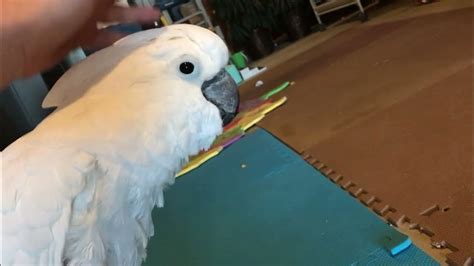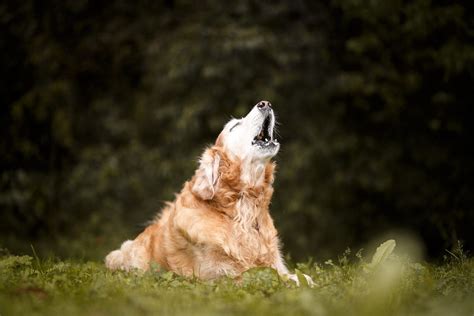
A cockatoo named Pebble is delighting the internet with his energetic pre-bedtime routine, showcasing a burst of playful activity known as “zoomies” that has captured the hearts of viewers worldwide.
Pebble, a charismatic cockatoo, has become an online sensation after a video of his lively pre-bedtime ritual went viral. The video, initially shared by his owner on social media platforms, features Pebble engaging in a spirited display of energy, running, flapping his wings, and vocalizing with evident enthusiasm. This behavior, commonly referred to as “zoomies,” is a well-known phenomenon among pet owners and animal enthusiasts, characterized by short bursts of frantic, seemingly random activity.
The video’s popularity has stemmed from its lighthearted and relatable depiction of animal behavior. Many viewers have expressed amusement and affection for Pebble, drawing parallels between his antics and the playful outbursts of their own pets. The widespread sharing and positive reception of the video underscore the enduring appeal of animal-related content on social media and the ability of such content to foster a sense of connection and shared experience among viewers.
According to Pebble’s owner, the zoomies are a regular occurrence before bedtime. “It’s a nightly ritual,” she explained. “He gets all his energy out before settling down for the night.” This predictable pattern suggests that the zoomies may serve a specific purpose for Pebble, potentially allowing him to release pent-up energy and prepare for rest.
Animal behaviorists note that zoomies are commonly observed across various species, including dogs, cats, and birds. While the exact causes of zoomies are not fully understood, several factors are believed to contribute to this behavior. These factors may include accumulated energy, excitement, a change in environment, or even a response to stress or anxiety. In Pebble’s case, the zoomies may be a combination of pent-up energy from a relatively inactive day and the anticipation of bedtime.
The viral video of Pebble’s zoomies has also sparked discussions about the importance of providing pets with adequate opportunities for exercise and mental stimulation. Cockatoos, in particular, are known for their intelligence and high energy levels, requiring regular interaction, enrichment activities, and space to move around. Pebble’s zoomies may be a natural outlet for his physical and mental needs, highlighting the responsibility of pet owners to ensure the well-being of their animals.
Furthermore, the incident underscores the broader role of social media in disseminating information about animal behavior and promoting responsible pet ownership. By sharing videos like Pebble’s zoomies, pet owners can educate others about the unique needs and characteristics of different animal species, fostering a greater understanding and appreciation for the animal kingdom.
The heartwarming response to Pebble’s zoomies video serves as a reminder of the joy and companionship that animals bring to our lives. It also highlights the importance of observing and understanding animal behavior, allowing us to better care for our pets and appreciate their unique personalities. As Pebble continues to entertain audiences online, his zoomies serve as a delightful example of the simple pleasures of animal companionship and the power of social media to connect people through shared experiences.
In-depth Analysis of the Cockatoo’s Zoomies
The phenomenon of “zoomies,” scientifically known as Frenetic Random Activity Periods (FRAPs), is not limited to domestic animals; it can be observed in various species, including wild animals in controlled environments. FRAPs are characterized by sudden bursts of energy and activity, often involving running, jumping, spinning, and vocalizing. These episodes are typically short-lived, lasting from a few seconds to several minutes, and are followed by a period of calm and relaxation.
In the context of domestic animals, zoomies are often associated with specific triggers, such as changes in environment, feeding times, or social interactions. For example, a dog may experience zoomies after being released from a crate, after a bath, or after a particularly exciting play session. Similarly, a cat may exhibit zoomies after using the litter box or after being startled by a sudden noise.
The underlying causes of zoomies are complex and multifaceted, involving both physiological and psychological factors. One potential explanation is that zoomies serve as a way for animals to release pent-up energy and relieve stress. Animals that are confined to limited spaces or that do not have adequate opportunities for exercise may experience a buildup of energy that needs to be released. Zoomies provide a physical outlet for this energy, allowing the animal to feel more relaxed and comfortable.
Another possible explanation is that zoomies are a form of play behavior. Play is an important part of animal development, allowing young animals to learn social skills, develop motor coordination, and explore their environment. Zoomies may be a way for animals to engage in playful activity, even in the absence of other playmates or toys. The random and unpredictable nature of zoomies can make them particularly engaging and stimulating for animals.
In the case of Pebble the cockatoo, his pre-bedtime zoomies may be a combination of both energy release and play behavior. Cockatoos are intelligent and active birds that require a stimulating environment to thrive. If Pebble spends most of his day in a cage or without much interaction, he may experience a buildup of energy that he needs to release before settling down for the night. The zoomies may also be a way for Pebble to express his excitement and anticipation of bedtime, as he associates this time with rest and relaxation.
The environment also plays a role in triggering zoomies. A change in environment, such as moving to a larger space or being introduced to a new object, can stimulate an animal’s curiosity and encourage them to explore their surroundings. This exploration may involve running, jumping, and other forms of energetic activity, leading to a zoomie episode.
Furthermore, social interaction can also trigger zoomies. Animals that live in groups may experience zoomies as a form of social play, chasing each other and engaging in mock fights. Even solitary animals may exhibit zoomies in response to human interaction, such as being petted or talked to.
Understanding the triggers and underlying causes of zoomies can help pet owners provide their animals with a more enriching and fulfilling environment. By providing adequate opportunities for exercise, play, and social interaction, pet owners can help their animals release pent-up energy and relieve stress, reducing the likelihood of unwanted behaviors.
Cockatoos as Pets: Considerations and Responsibilities
The popularity of videos like Pebble’s zoomies has led to increased interest in cockatoos as pets. However, it is crucial for potential cockatoo owners to understand the unique challenges and responsibilities associated with caring for these intelligent and demanding birds.
Cockatoos are native to Australia, Indonesia, and New Guinea, and are known for their distinctive crests, powerful beaks, and loud vocalizations. They are highly social animals that live in flocks in the wild, and require a great deal of attention and interaction in captivity.
One of the biggest challenges of owning a cockatoo is meeting their social needs. Cockatoos are prone to loneliness and boredom if left alone for extended periods of time, which can lead to destructive behaviors such as feather plucking, excessive screaming, and aggression. Potential cockatoo owners should be prepared to spend several hours each day interacting with their bird, providing them with attention, play, and training.
Another challenge is managing their vocalizations. Cockatoos are naturally noisy birds, and their calls can be quite loud and piercing. This can be a problem for people who live in apartments or have neighbors who are sensitive to noise. Training can help to reduce excessive vocalizations, but it is important to accept that cockatoos will always be relatively noisy pets.
Cockatoos also require a large and stimulating environment to thrive. They need a spacious cage that allows them to move around freely and stretch their wings. They also need a variety of toys and enrichment items to keep them mentally stimulated and prevent boredom. These toys should be rotated regularly to maintain the bird’s interest.
In addition to their social and environmental needs, cockatoos also require a specialized diet. They should be fed a balanced diet that consists of high-quality pellets, fresh fruits, vegetables, and nuts. It is important to avoid feeding cockatoos processed foods, sugary snacks, and foods that are toxic to birds, such as chocolate and avocado.
Furthermore, cockatoos have a long lifespan, often living for 40 to 80 years in captivity. This means that owning a cockatoo is a long-term commitment, and potential owners should be prepared to provide for their bird’s needs for many years to come. It is also important to consider who will care for the bird if the owner becomes unable to do so due to illness or death.
Before acquiring a cockatoo, it is essential to do thorough research and consult with experienced cockatoo owners or avian veterinarians. It is also recommended to spend time with cockatoos at a rescue organization or sanctuary to get a better understanding of their behavior and needs.
Owning a cockatoo can be a rewarding experience, but it is not for everyone. These birds require a significant investment of time, money, and effort, and potential owners should be fully prepared to meet their needs before bringing one into their home.
The Role of Social Media in Promoting Animal Welfare
The viral success of Pebble’s zoomies video highlights the growing role of social media in promoting animal welfare. Social media platforms provide a powerful tool for sharing information about animal behavior, educating the public about responsible pet ownership, and advocating for animal rights.
By sharing videos and stories about animals, pet owners can raise awareness about the unique needs and characteristics of different species. This can help to dispel common misconceptions about animal behavior and encourage people to treat animals with respect and compassion.
Social media can also be used to promote responsible pet ownership practices. Pet owners can share tips on how to care for their animals, including information about diet, exercise, grooming, and veterinary care. This can help to improve the health and well-being of pets and reduce the incidence of animal neglect and abuse.
Furthermore, social media can be used to advocate for animal rights and raise awareness about animal welfare issues. Animal rights organizations can use social media to share information about animal cruelty, promote veganism, and lobby for legislation that protects animals. This can help to create a more humane and just world for animals.
However, it is important to note that social media can also be used to spread misinformation and promote harmful stereotypes about animals. It is crucial to be critical of the information that is shared on social media and to rely on credible sources, such as veterinarians, animal behaviorists, and reputable animal welfare organizations.
In addition, it is important to be mindful of the impact that social media content can have on animals. Sharing videos of animals being harmed or exploited can normalize animal cruelty and desensitize people to the suffering of animals. It is also important to avoid sharing content that promotes the commodification of animals or encourages people to acquire animals impulsively.
Overall, social media has the potential to be a powerful force for good in the animal welfare movement. By using social media responsibly and thoughtfully, we can help to create a more compassionate and just world for all animals.
Zoomies in Different Animals: A Comparative Perspective
While Pebble the cockatoo’s zoomies have captured the internet’s attention, it’s important to understand that this behavior is common across a wide range of animal species. Comparing zoomies in different animals can provide valuable insights into the underlying causes and functions of this fascinating phenomenon.
Dogs: Zoomies are perhaps most commonly associated with dogs, often referred to as “FRAPs” (Frenetic Random Activity Periods). In dogs, zoomies are characterized by bursts of running, spinning, and playful nipping, often occurring after a bath, during playtime, or in response to excitement. The reasons for zoomies in dogs are varied but often attributed to releasing pent-up energy, excitement, or a change in environment.
Cats: Cats also exhibit zoomies, often involving running through the house, climbing furniture, and engaging in playful attacks on inanimate objects. Cat zoomies are often triggered by hunting instincts, a change in litter box cleanliness, or simply a burst of energy. Similar to dogs, cats may experience zoomies to release pent-up energy or to engage in playful exploration.
Horses: Horses can experience zoomies in the form of playful running, bucking, and kicking in pastures. This behavior is often observed in young horses or after a period of confinement. Zoomies in horses likely serve as a way to release energy, stretch muscles, and engage in social play.
Rabbits: Rabbits are known for their “binkies,” which are essentially zoomies involving jumps, twists, and kicks. Binkies are a sign of happiness and contentment in rabbits, indicating that they feel safe and secure in their environment. Rabbit zoomies are often triggered by positive interactions with their owners or by a change in environment.
Birds (Other than Cockatoos): Many bird species, including parrots, finches, and canaries, exhibit zoomies in the form of flapping, flying around their cages, and vocalizing excitedly. Zoomies in birds may be related to releasing energy, practicing flight skills, or responding to environmental stimuli.
Rodents (Hamsters, Guinea Pigs, etc.): Smaller rodents can also experience zoomies, often involving running in circles, climbing on cage furniture, and squeaking excitedly. Zoomies in rodents may be triggered by changes in environment, feeding times, or social interaction.
Reptiles: While less common, reptiles can also exhibit zoomie-like behavior. For example, lizards may dart around their enclosure, climb on rocks, or bask under a heat lamp with increased activity. These bursts of activity may be related to thermoregulation, hunting instincts, or exploration.
Comparing zoomies across different species reveals some common themes. In most cases, zoomies appear to be a natural and healthy way for animals to release pent-up energy, engage in play, and explore their environment. The specific triggers and manifestations of zoomies may vary depending on the species, but the underlying function remains the same.
Understanding zoomies in different animals can help pet owners better understand their pets’ behavior and provide them with an environment that meets their physical and mental needs. By providing adequate opportunities for exercise, play, and enrichment, pet owners can help their animals thrive and reduce the likelihood of unwanted behaviors.
FAQ about Pebble the Cockatoo’s Zoomies
- What are “zoomies” and why do animals get them?
Zoomies, also known as Frenetic Random Activity Periods (FRAPs), are short bursts of energetic and seemingly random activity. They are characterized by running, jumping, spinning, and vocalizing. Animals get them for various reasons, including releasing pent-up energy, relieving stress, engaging in play, or responding to a change in environment. For Pebble, it’s likely a combination of pent-up energy before bedtime and excitement.
- Are zoomies normal behavior for cockatoos?
Yes, zoomies are normal behavior for cockatoos and other birds. Cockatoos are intelligent and active birds that require a stimulating environment to thrive. Zoomies are a way for them to release energy and engage in playful activity.
- Is there anything wrong with Pebble if he gets the zoomies every night?
No, there is nothing wrong with Pebble. According to his owner, it’s a nightly ritual. This suggests that it’s a normal and healthy way for him to release energy before settling down for the night. If the zoomies were accompanied by other concerning behaviors, such as feather plucking or aggression, it would be important to consult with an avian veterinarian.
- How can I help my pet release their energy if they get zoomies frequently?
Provide your pet with adequate opportunities for exercise, play, and mental stimulation. This may include providing them with a large and stimulating environment, offering them a variety of toys, engaging them in training activities, and spending time interacting with them. For cockatoos, this means a large cage, plenty of toys, and daily interaction.
- Are cockatoos good pets for everyone?
No, cockatoos are not good pets for everyone. They require a significant investment of time, money, and effort. They are highly social animals that need a lot of attention and interaction. They are also noisy birds and can be prone to destructive behaviors if they are not properly cared for. Potential cockatoo owners should do thorough research and consult with experienced cockatoo owners or avian veterinarians before acquiring one. They need large cages, special diets, and plenty of mental stimulation to thrive.









